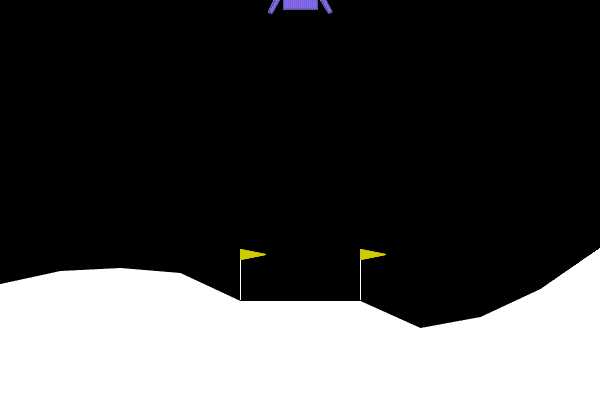Project Overview
This project explores reinforcement learning by training an AI agent to safely land a spacecraft on the lunar surface. Unlike supervised learning, the agent wasn't explicitly taught how to land - it had to discover the optimal strategy through trial and error.
The challenge involves controlling thrust and rotation to navigate the lander to a designated landing pad without crashing. The agent receives rewards for moving toward the pad and penalties for crashing or using fuel. Through thousands of simulated landings, the agent gradually learns effective landing strategies.
Personal Note
This is perhaps my favorite project. I vividly remember setting the code to run and then stepping away to watch a Lakers game with my brother. About 45 minutes later, I returned to a successfully trained agent. I was bursting with excitement but when I showed it to my brother he was thoroughly unimpressed. I blame that on the Lakers losing. Despite that, the moment captured the joy I find in data science: witnessing tangible progress in something that once seemed impossible.
Methodology & Approach
1. Environment Setup
I used OpenAI Gym's LunarLander-v2 environment, which simulates a spacecraft landing scenario with realistic physics. The state space includes position, velocity, angle, and angular velocity, while the action space allows controlling main and side thrusters.
2. Algorithm Selection
After evaluating several reinforcement learning approaches, I chose Deep Q-Learning (DQN) for this project because:
- It handles continuous state spaces well
- It's sample-efficient compared to policy gradient methods
- The discrete action space of the lunar lander is ideal for Q-learning
3. Network Architecture
The Q-network consisted of:
- Input layer matching the state dimension (8 features)
- Two hidden layers with 64 neurons and ReLU activation
- Output layer with 4 neurons (one for each action)
4. Training Process
The agent trained through these key components:
- Experience replay to break correlations between consecutive samples
- Target network for stable learning
- Epsilon-greedy exploration strategy starting at 100% random actions and gradually becoming more strategic
- Approximately 1500 episodes to reach consistently successful landing
Challenges & Solutions
Challenge: Unstable Learning
Early training attempts showed high variance in performance with frequent regression.
Solution: Implemented experience replay with a memory buffer of 100,000 experiences and a target network updated every 100 learning steps, significantly stabilizing the learning process.
Challenge: Exploration vs. Exploitation
The agent would often get stuck in local optima, learning to hover but never land.
Solution: Fine-tuned the epsilon decay rate to ensure sufficient exploration and added reward shaping to encourage progress toward landing.
Challenge: Computational Efficiency
Initial training was prohibitively slow on my personal computer.
Solution: Optimized batch sizes and network architecture, and implemented periodic model saving to resume training if interrupted. This reduced training time by approximately 40%.
Key Takeaways
Technical Insights
- Reinforcement learning excels at problems where the optimal strategy isn't obvious to humans
- Proper reward design is critical - small adjustments can dramatically affect learning
- The exploration-exploitation tradeoff requires careful tuning for each specific environment
Broader Applications
The techniques used here have applications far beyond simulated lunar landings:
- Robotic control systems
- Autonomous vehicles
- Resource management problems
- Any system requiring decision-making with delayed rewards
